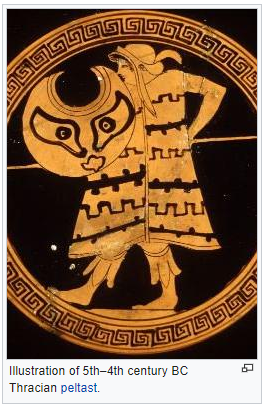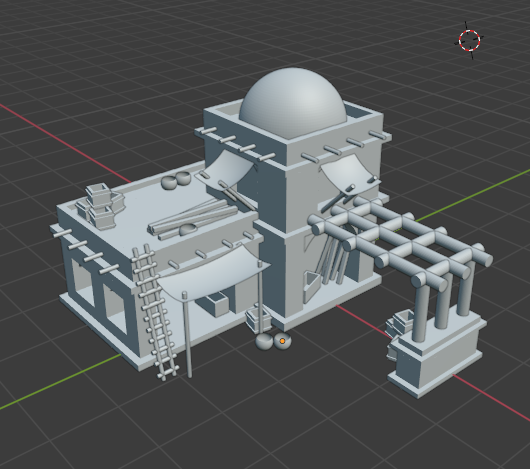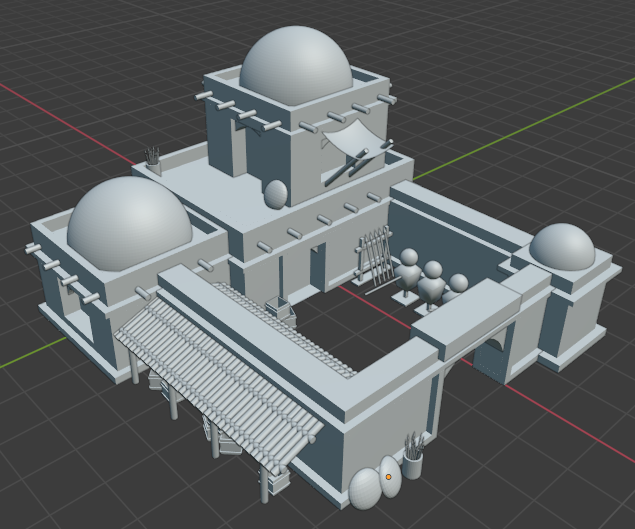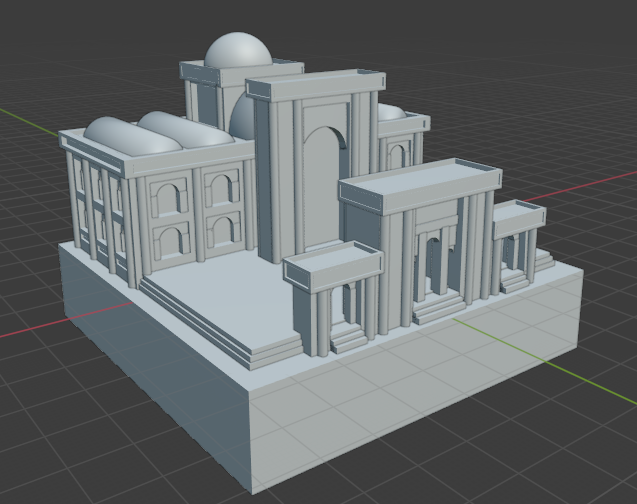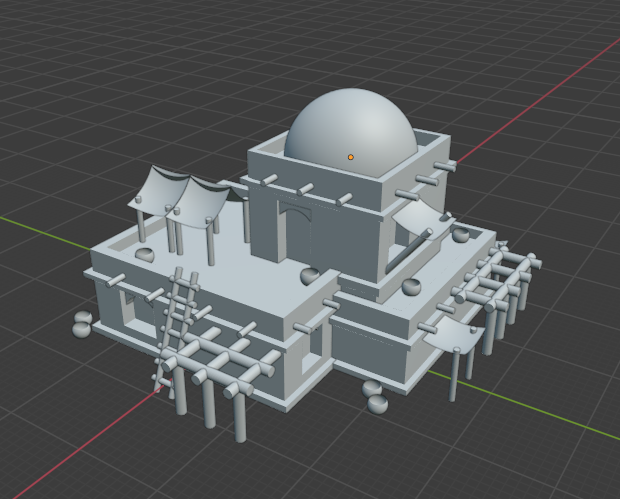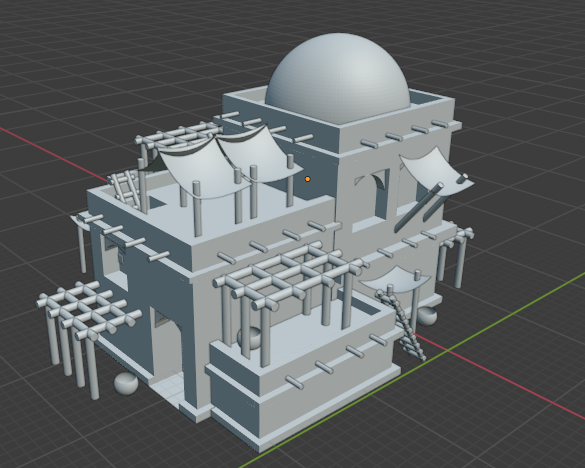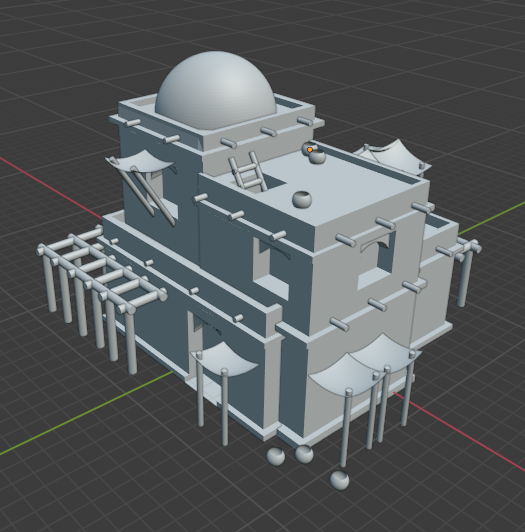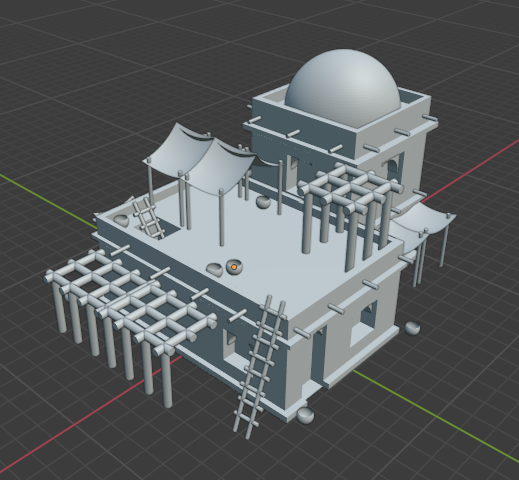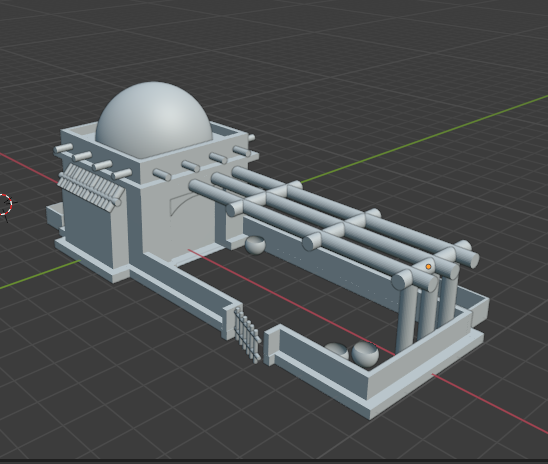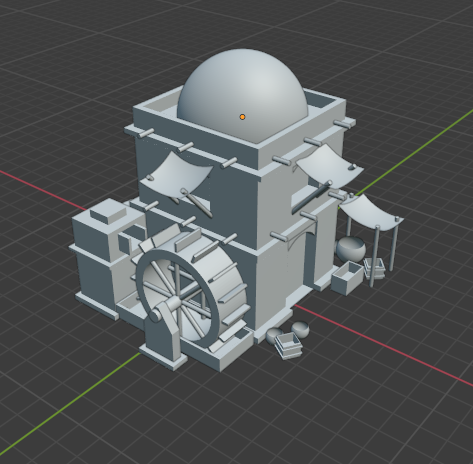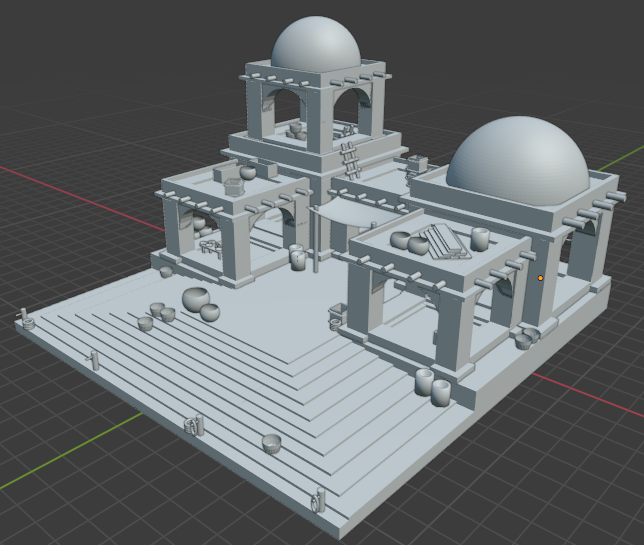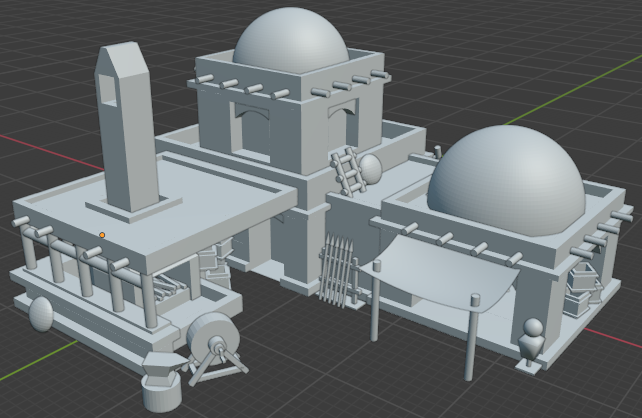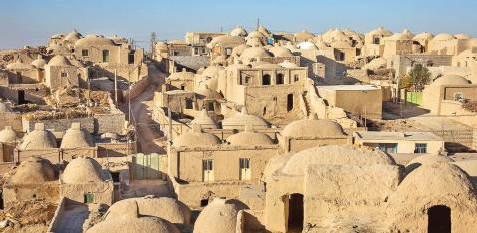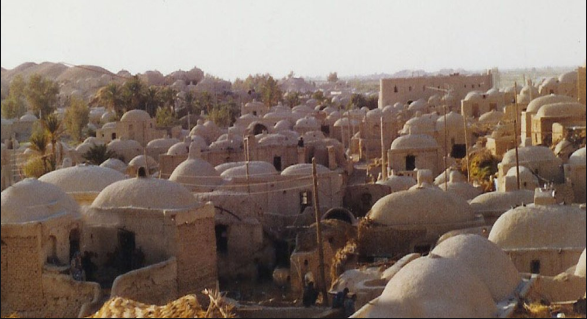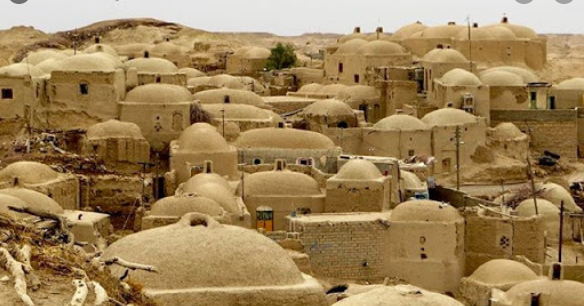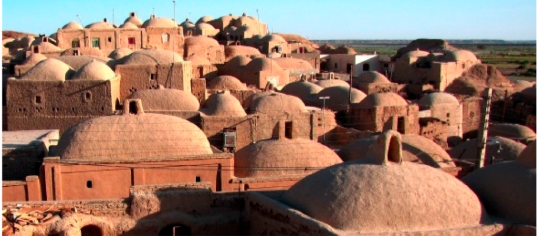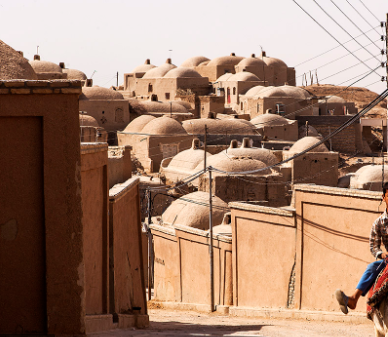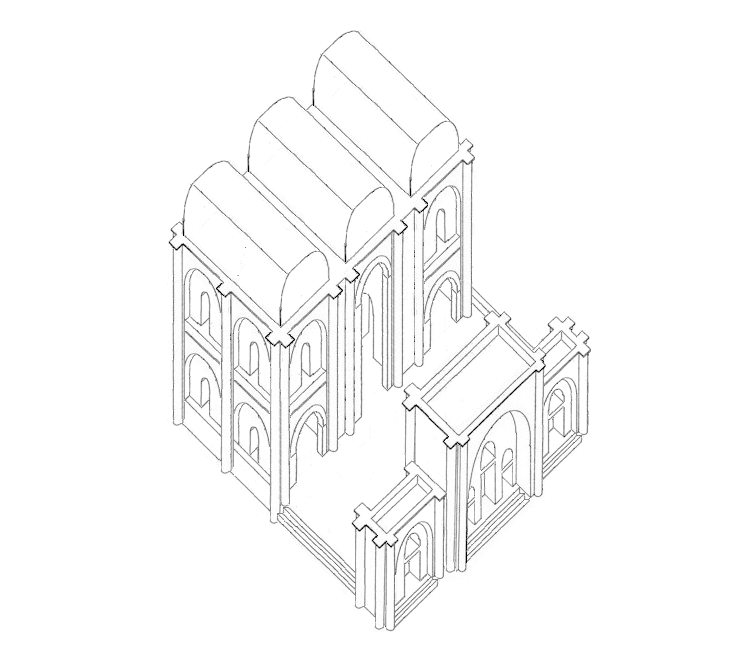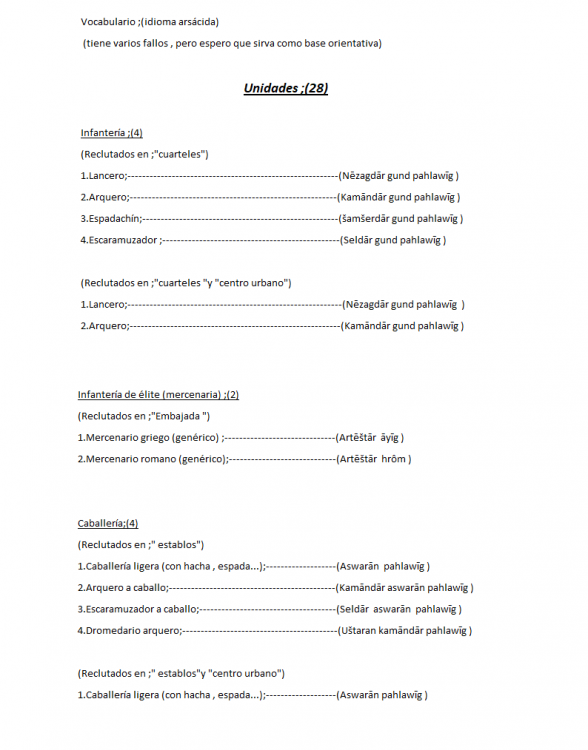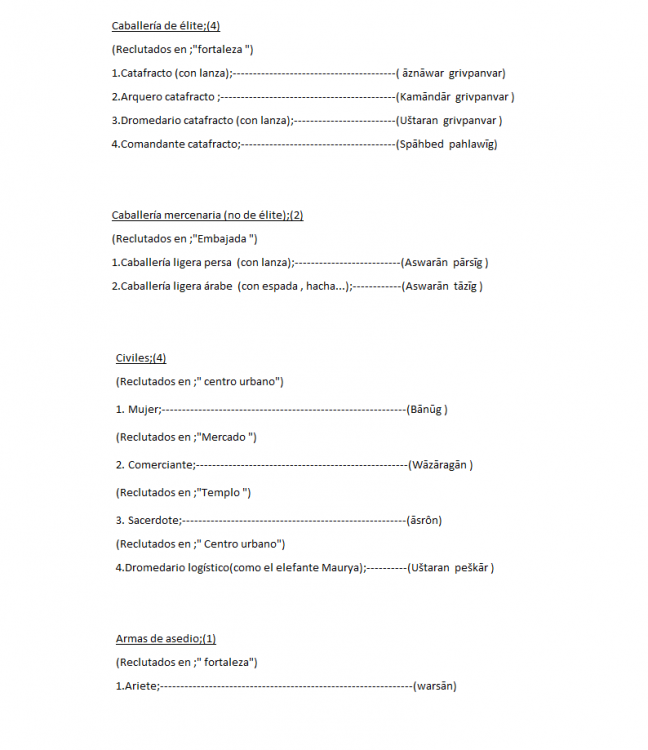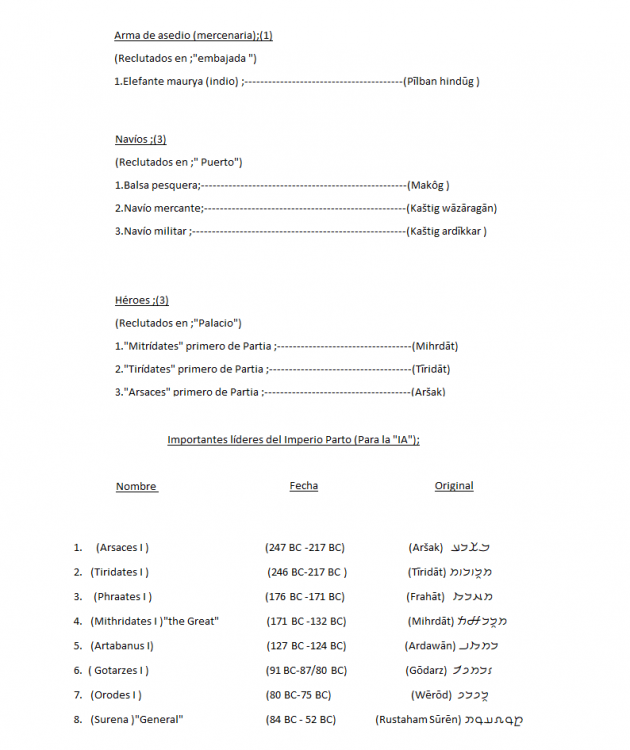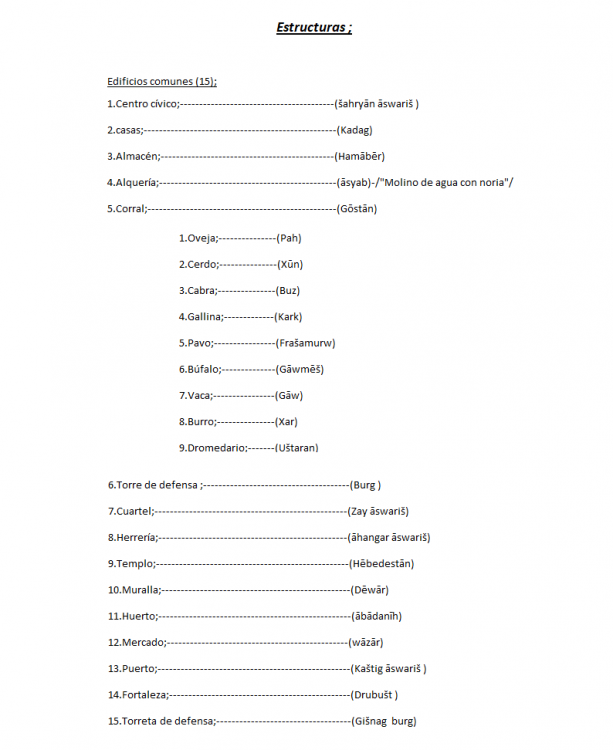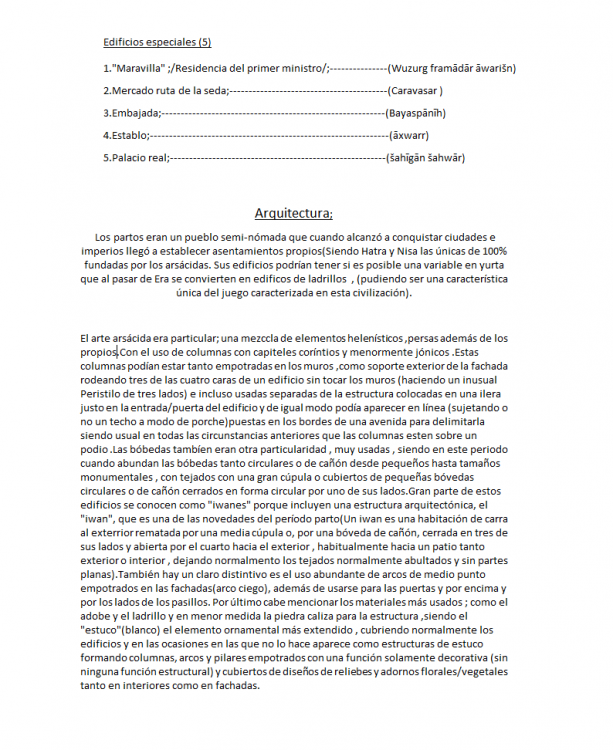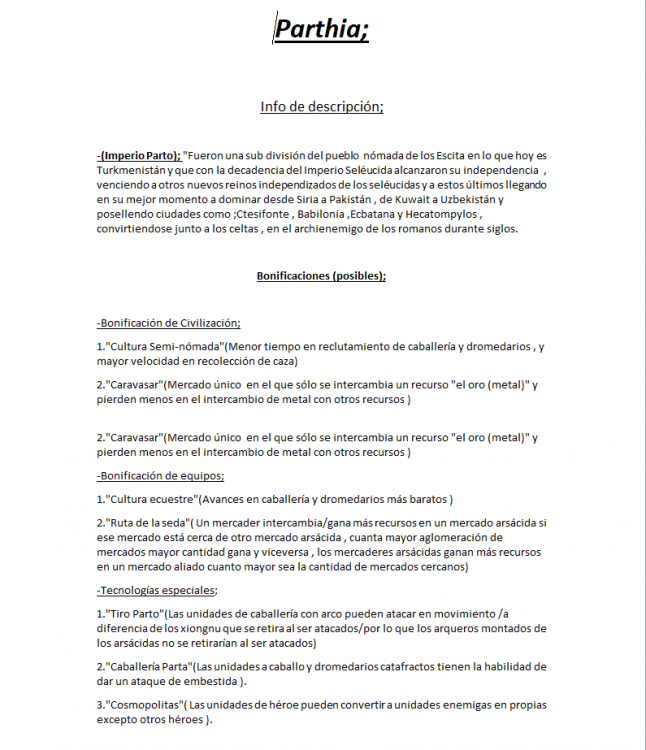Leaderboard
Popular Content
Showing content with the highest reputation on 2020-09-28 in all areas
-
http://groznijat.tripod.com/thrac/index.html https://tied.verbix.com/project/glossary/thra.html https://www.academia.edu/25248385/Studies_in_Thracian_vocabulary_I_VII_ https://sci-hub.st/downloads/2020-01-07/41/sotiroff1963.pdf#view=FitH zibythides for nobles, suras for warrior etc.3 points
-
Buenas @Genava55; Estas fuentes son muy interesantes , voy a usarlas para las traducciones y en unos días tendré casi todo . También e visto sus referencias a la arquitectura y haré bocetos . ya que creo que hay suficientes referencias para crear a las unidades . Ideas; Posible símbolo; ideas para las unidades ; Unidades ;(28) Infantería ;(5) (Reclutados en ;"cuarteles") 1.Lancero;---------------------------------------------------------( ) 2.Escaramuzador;-------------------------------------------------( ) 3.Espadachín;-----------------------------------------------------( ) 4.Arquero ;---------------------------------------------------------( ) 5.Guerrero con hacha;--------------------------------------------( ) (Reclutados en ;"cuarteles "y "centro urbano") 1.Lancero;----------------------------------------------------------( ) 2.Escaramuzador;-------------------------------------------------( ) *posibilidad que toda la infantería menos arquero , tenga dos armas , la X y las javalinas. y los escaramuzadores , las javalinas y una espada corta. Infantería campeona;(1) (Reclutados en ;" ") 1.Campeón tracio;-----------------------------------------------( ) Infantería mercenaria ;(2) (Reclutados en ;" ") 1.Mercenario dacio(genérico);--------------------------------( ) 2.Mercenario ilirio(genérico);---------------------------------( ) Infantería campeona mercenaria;(1) (Reclutados en ;" ") 1.Mercenario Hoplita griego ;----------------------------------( ) Caballería;(2) (Reclutados en ;" ") 1.Caballería ligera (con hacha , espada...);-------------------( ) 2.Escaramuzador a caballo;-------------------------------------( ) (Reclutados en ;" "y "centro urbano") 1.Caballería ligera (con hacha , espada...);-------------------( ) Caballería de élite;(2) (Reclutados en ;" ") 1. Jinete campeón ;-----------------------------------------( ) 2. Jinete escaramuzador campeón;----------------------( ) Caballería mercenaria (no de élite);(2) (Reclutados en ;" ") 1.Caballería griega (con lanza);----------------------------( ) 2.Caballería celta;-------------------------------------------( ) Caballería mercenaria de élite;(1) (Reclutados en ;" ") 1.Caballería escita (con arco) ;-------------------------------( ) Civiles;(3) (Reclutados en ;" centro urbano") 1. Mujer;------------------------------------------------------------( ) (Reclutados en ;"Mercado ") 2. Comerciante;----------------------------------------------------( ) (Reclutados en ;"Templo ") 3. Sacerdote;-------------------------------------------------------( ) Armas de asedio;(1) (Reclutados en ;" fortaleza") 1.Ariete;--------------------------------------------------------------( ) Arma de asedio mercenaria ;(1) (Reclutados en ;" ") 1.Catapulta macedonia ;----------------------------------------( ) Navíos ;(3) (Reclutados en ;" Puerto") 1.Balsa pesquera;----------------------------------------------------( ) 2.Navío mercante;---------------------------------------------------( ) 3.Navío militar ;------------------------------------------------------( ) Navíos mercenario;(1) (Reclutados en ;" Puerto") 1.Navío militar griego;-----------------------------------------------( ) Héroes ;(3) (Reclutados en ;" ") 1." ";-------------------------------------() 2." ";-------------------------------------() 3." ";-------------------------------------()2 points
-
Developing the Odrysians would be really nice. This a lesser known civ with very interesting units.2 points
-
Buenas , estuve trabajando en posibles edificios para Arsácidas ; ( SON BOCETOS , así que serán moldeados en breve ) ALMACÉN; BARRACAS; CENTRO CÍVICO; CASAS; (4 MODELOS) CORRAL; GRANJA (MOLINO DE AGUA); (también haré un molino de viento) MERCADO; PUERTO; HERRERÍA; INSPIRADOS EN; (TODAS SON DIFERENTES ALDEAS , AUNQUE PAREZCAN LA MISMA) Son casas y aldeas datadas en fechas del Imperio Arsácidas (con apenas cambios desde entonces) y por eso las tomé como ejemplo , ahora hace falta añadir elementos persas , arsácidas y alguno helenístico. Disculpen las molestias *2 points
-
T H R A C I A N S Version Compatibility: SVN (Do not use with standard Alpha) Download repository: https://github.com/0ADMods/thracians Faction Design Document Original post:1 point
-
Buenas , @Genava55 , Ya me he puesto en marcha , además de arsácidas , lusitanos ... estoy trabajando con los Tracios .Creo que ya hay demasiada influencia Helenística en el juego por ahora como la propias facciones griegas (Atenas y Esparta) , también hay otras facciones muy helenizadas como ( Macedonios , seléucidas) y los Ptolemaicos (cada vez lo son más ) .También los Arsácidas en los que trabajo necesitan un toquecito helenístico y por ello creo que sería buena idea hacer a los Tracios lo más únicos posibles( con algo de influencia griega inevitablemente por motivos históricos ) , no va a ser problema , encontré suficientes referencias para edificios y unidades poco helenizadas e incluso de influencia Dacia .Para hacer a los tracios más únicos , me basaré lo mínimo posible en los Odrisios pero también es inevitable hacerles referencias . No sé si estará de acuerdo , pero eso también ayudara a la jugabilidad , por que si muchas facciones tienen las mismas referencias helenísticas , puede ser un poco liosos en partidas rápidas . Posdata; Sería una arquitectura singular , casi toda en madera tallada.(eso me inspira para las bonificaciones de civ.) y va a quedar muy bonita . Disculpe las molestias *1 point
-
1 point
-
Decidí no hacer todos los modelos para todos los edificios , porque no sabía si iban a ser aceptados , si lo son , continuaré y moldearé , encontré ruinas para el Templo , Fortaleza y Posible Maravilla.(con sus nombres originales) -Elementos a añadir ; "iwanes" , columnas , columnas empotradas , arcos , arcos ciegos , celosías , mampostería , bajo relieves , terrazas , balcones , bóvedas de cañón y escalinatas entre otras ...(dejé los edificios en blanco sólo porque no sabía si iban a ser aceptado además de que no se aplicar del todo los colores. Posdata; También tengo ideas para el aspecto de las unidades (pero tengo todavía que trabajarlos y necesitaría algo de ayuda)Aún no domino la aplicación de diseño gráfico , pero estoy aprendiendo para reflejar más los detalles. Disculpen las molestias *1 point
-
Does that matter? The important thing is people see there is activity. Not too many, I suppose, however, it is the official page of the game, and when people visit it, they see the start of the last three posts, in this case June 4, 2020; April 30, 2020; September 12, 2019; which doesn't look very promising. Besides, the same message could be posted on various social media, of course.1 point
-
Como no encontré un edificio modelo para crear un "Centro Cívico Arsácida" , creé uno a raíz de la antigua ciudades de "Hatra" y "Ctesifonte" ;( espero que les parezca interesante y corrijan cualquier error histórico-arquitectónico) ; Las dimensiones respecto a una persona no las puse , pero mi intención sería que tuviera un tamaño similar al "Centro Cívico Romano" . Para darle más vida sería interesante ponerle alguna decoración vegetal , jarrones , alfombras ... Disculpen las molestias.1 point
-
Buenas ; He vuelto a intentar precisar con el idioma de los partos segregando lo del sasánida ;(esta vez es más exacto pero necesita revisión) Disculpen me si les dificulta este formato en fotografías. Ideas; fuentes; http://www.rabbinics.org/pahlavi/MacKenzie-PahlDict.pdf https://en.wikipedia.org/wiki/List_of_Parthian_kings https://en.wikipedia.org/wiki/Tiridates_I_of_Parthia https://en.wikipedia.org/wiki/Surena https://es.wikipedia.org/wiki/Surena http://www.ancient-battles.com/catw/parthia.htm https://en.wikipedia.org/wiki/Cataphract https://omniglot.com/writing/parthian.htm http://www.rabbinics.org/pahlavi/MacKenzie-PahlDict.pdf https://es.glosbe.com/pal/es https://es.glosbe.com/pal/en https://en.wikipedia.org/wiki/Pahlavi_scripts#Sasanian_Pahlavi https://en.wikipedia.org/wiki/Parthian_language1 point
-
They have been replaced in Europa Barbarorum II (I see you took your inspiration from EB1), now the Parthians and the Seleucids have access to: Payadag i Kardakan / Persian Heavy Spearmen These men have been trained and carry uniform equipment, making them more reliable than other eastern infantrymen. Equipped with thureos shields and spears, they provide a strong infantry line, which levied men would not be able to hold against organised opposition. Historically the Hakhamanishiya had always promoted a common education, in theory open to everyone, but only the nobility could truly afford it. All of this resulted in a comprehensive system, which provided future officials and administrators, but was also integral to the preparation for military life. Split in companies of 50 youths, led generally by the noblest of them, they followed a daily routine of exercises and studies. Specifically they were trained to increase their endurance through proper breathing techniques, but also how to resist the cold, heat and rains, to cross streams while keeping their clothing and armour dry, to tend to flocks and how to live outdoors all night, eating wild fruits like pistachios, acorns and pears. Moreover these youths ate and hunted together, while after their exercises they were instructed in the planting of trees, cutting and gathering of wood or roots and the making of weapons, hunting nets and linen clothing. All of this signified a rite of passage, because during this period the youths proved that they could be admitted to the adult part of society. Even ancient authors noted the similarities to the Spartan Agoge and especially the Krypteia, however Strabon recorded how these youths were known as Kardaka, because Karda according to him meant manly and warlike spirit. This root word however, actually described those wandering or travelling, denoting the behaviours these youths had to learn. With the shortage of Hellenic mercenaries in the late 4th century BC, the Satrapal administration extended part of this system to young men in their dependencies, in order to develop a larger pool of trained infantry. This very infrastructure later allowed Alexandros Megas to muster and train Asiatikoi in Hellenistic warfare and indeed the practice was kept alive by the Seleukidai, who improved the Kardaka even further by furnishing them thureos shields. Erin-mesh Uriki / Akkadian Elite Infantry These men are the closer order infantry of the Akkadian peoples of Mesopotamia. Many of them wear some armour, helmets and light thorakes, and all carry aspides to go with their long spears. The spears give them good length when defending city walls, fending off cavalry, running down light troops, or challenging sarissa-equipped phalanxes. The Erin-mesh Uriki are drawn from the citizen rolls of Akkadian cities, and were customarily employed as guardians of cities and temples and as emergency militia during wartime. Historically, the heyday of Akkadian arms was well past, although the monuments of Babylon, Uruk, and other places stand as testament to the Akkadians of the power their forefathers once held. The Akkadians were well-accustomed, for many years, to both pitched battle in close order formation and to skirmishes against lighter troops from the Arabian desert to the southwest and the highlands to the east. In the Persian Wars, the Akkadians were marshalled together with the Assyrians and Arameans, and even then carried concave round shields comparable to the aspis, lengthy spears, and variations of the machaira (Hdt. 7.63). Akkadians fought at Gaugamela as well under the satrap Mazaios, but soon after found themselves under Makedonian rule. Six thousand were trained by Macedonian instructors and joined Alexander's army in Bactria as pantodapoi, while others continued to serve, probably in traditional panoplies, in garrison duty roles. Babylonian tablets provide strong evidence that Akkadians continued to play limited, mainly regional military roles. Babylonian troops suffered heavy casualties against Ptolemaic phalangites in defence of their city in 245 BC due to their lighter equipment, but managed to hold a few key sectors of the city. Nezagdar / Iranian Spearmen These men represent the lower ranks of retainers to the Azads and nobles who come to the aid of the Shahanshah. They are not wealthy enough to possess their own horse, but are still able to possess enough equipment to fight as line infantry instead of as skirmishers. Armed with spear and reed shields, they can hold a line against lighter foes, but are not able to hold their own for long against more heavily armed opponents. Most of the men in this unit are dressed in everyday clothes, including cloth jackets, pants and leather boots or shoes. Many wear a Kyrbasia, a hat with flaps which can be tied under the chin, or around the back of the neck of the wearer. Often, the flaps could be used to cover the mouth and nose, useful when in arid conditions, where dust clouds from marching would otherwise make breathing hard. Others wear simple cloth caps. Some of them wear tube and yoke armour corselets, made from leather or hardened linen, sometimes with padding added for extra protection. Their reed shields would be made from long pieces of reed on a leather base, where the reeds were fastened by being pushed through holes made in the leather. In this manner, it was possible to render impressive geometric patterns without the need for any paint or other decoration. They carry spears equipped with a ball-shaped butt, which helps to balance the weapon while fighting. Historically, the armies of ancient Iran consisted of generally mounted noblemen, accompanied by their retinue, and levies from their lands. The more elite warriors were often funded by the nobleman himself: the rest were generally civilians who followed their local noble. Although the most prominent section of an Azad's retinue was the armoured cavalry, a larger portion was made up of less well trained and well equipped men. Those peasants and townsmen who could not afford a war horse, but were wealthy enough to purchase armour and weapons would serve as the line infantry. Men like these would have made up the majority of the armies faced by Alexandros, and still during the age of Parthian, and even Sassanian, hegemony, such men would be the mainstay of the infantry forces in Iranian armies.1 point
-
Buenas ;Les traigo vocabulario ;(idioma arsácida) (tiene varios fallos , pero espero que sirva como base orientativa) Unidades ;(28) Infantería ;(4) (Reclutados en ;"cuarteles") 1.Lancero;-------------------------------------------------(Nizagan-î Eranshahr) 2.Arquero;-------------------------------------------------(Shivatîr-î Dêhbêd) 3.Hondero;------------------------------------------------(Shûbân-î Fradâkhshânâ) 4.Escaramuzador con hacha;----------------------------(Kôfyârên-î Verkhânâ) (Reclutados en ;"cuarteles "y "centro urbano") 1.Lancero;-------------------------------------------------(Nizagan-î Eranshahr) 2.Arquero;-------------------------------------------------(Shivatîr-î Dêhbêd) Infantería de élite (mercenaria) ;(2) (Reclutados en ;"Embajada ") 1.Tureóforo griego ;-------------------------------------(Parthohellenikoi Thureophoroi) 2.Infanteria romana;------------------------------------(Nizagan-î āyīg ) Caballería;(4) (Reclutados en ;" establos") 1.Caballería ligera (con hacha , espada...);----------(Asabaran-î Pahlavânîg) 2.Arquero a caballo;------------------------------------(Shivatîr-î Pahlavânîg) 3.Escaramuzador a caballo;----------------------------(Asabaran-î Hauravatish) 4.Dromedario arquero;---------------------------------(Uštaran-e Shivatîr ) (Reclutados en ;" establos"y "centro urbano") 1.Caballería ligera (con hacha , espada...);-----------(Asabaran-î Pahlavânîg) Caballería de élite;(4) (Reclutados en ;"fortaleza ") 1.Catafracto (con lanza);--------------------------------(Pahlavân-î Grivpanvâr) 2.Arquero catafracto ;-----------------------------------(Shivatîr-î Zrêhbârân ) 3.Dromedario catafracto con lanza;-------------------(Uštaran-e Zrêhbârân) 4.Comandante catafracto;------------------------------(Pushtîghbânê Shâhigân-î Pahlavânîg) Caballería mercenaria (no de élite);(2) (Reclutados en ;"Embajada ") 1.Caballería persa ligera (con lanza);----------------------------(Asbaran-î pārsīg ) 2.Caballería árbe ligera (con espada , hacha...);---------------( Asbaran-î Tāzīg ) Civiles;(4) (Reclutados en ;" centro urbano") 1. Mujer;-----------------------------------------------------------(Bānūg ) (Reclutados en ;"Mercado ") 2. Comerciante;---------------------------------------------------(Wāzāragān ) (Reclutados en ;"Templo ") 3. Sacerdote;------------------------------------------------------( āsrôn) (Reclutados en ;" Centro urbano") 4.Dromedario logístico(como el elefante Maurya);---------(Uštaran-e peškār ) Armas de asedio;(1) (Reclutados en ;" fortaleza") 1.Ariete;-----------------------------------------------------------(warzān) Arma de asedio (mercenaria);(1) (Reclutados en ;"embajada ") 1.Elefante maurya (indio) ;-------------------------------------(Pīlban hindūg ) Navíos ;(3) (Reclutados en ;" Puerto") 1.Balsa pesquera;----------------------------------------------(Makôg ) 2.Navío mercante;---------------------------------------------(Kaštig-īh) 3.Navío militar ;------------------------------------------------(Kaštig ardīkkar ) Héroes ;(3) (Reclutados en ;"Palacio") 1."Mitrídates" primero de Partia ;------------------(Mihrdāt) 2."Tirídates" primero de Partia ;---------------------(Tīridāt) 3."Arsaces" primero de Partia ;----------------------(Aršak)1 point

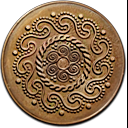
.thumb.jpg.b21ca1d0c15fb56b42c39b25a0a40815.jpg)

